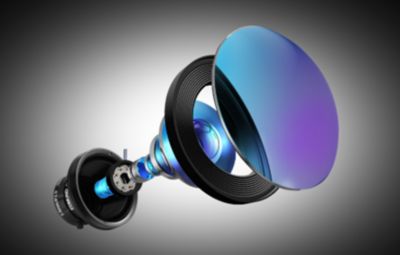-
United States -
United Kingdom -
India -
France -
Deutschland -
Italia -
日本 -
대한민국 -
中国 -
台灣
-
Ansys s'engage à préparer les étudiants d'aujourd'hui à la réussite, en leur fournissant gratuitement un logiciel de simulation.
-
Ansys s'engage à préparer les étudiants d'aujourd'hui à la réussite, en leur fournissant gratuitement un logiciel de simulation.
-
Ansys s'engage à préparer les étudiants d'aujourd'hui à la réussite, en leur fournissant gratuitement un logiciel de simulation.
-
Contactez-nous -
Carrières -
Étudiants et universitaires -
-
S'inscrire -
Déconnexion -
Espace client -
Support -
Communautés partenaires -
Contacter le service commercial
Pour les États-Unis et le Canada
+1 844.462.6797
-

In the ever-evolving field of optical design, artificial intelligence (AI) is enabling advances in multiphysics simulations that will reshape the way engineers approach their work. This technology has the potential to produce innovations previously unimagined by providing insights that yield a better understanding of the real performance of optical systems. It also provides the computational power to explore design spaces faster and more efficiently than ever before.
Edmund Optics, based in New Jersey, is a leading supplier of optics, imaging, and photonics products, offering a wide range of optical components and systems. The company is investigating ways to improve design efficiency with AI. Meanwhile, Ansys Optics is pursuing innovative ways to incorporate AI into its multiphysics design and simulation software. Seeking similar solutions, the two companies are working to shape the optical designs of the future.

AI neural networks can generate optical design starting points based on desired end specifications after analyzing existing designs in training.
Using Multiphysics Simulations for Comprehensive Analysis
Multiphysics simulations enable engineers to simulate the complex interactions among optical, mechanical, thermal, and other physical phenomena. This comprehensive approach enables a deeper understanding of how factors impact the performance of optical systems.
By integrating multiphysics simulations into the design workflow, engineers can evaluate the impact of environmental conditions, material properties, and manufacturing tolerances on optical performance. This holistic analysis ensures that optical designs are robust and reliable under real-world operating conditions.
However, conducting multiphysics simulation accurately and efficiently can be a challenge. AI has the power to address this challenge in several unique ways.

Saving Time With AI-generated Design Starting Points
Much of an optical designer’s time is spent at the beginning of the design process. This includes figuring out the overall form of the lens assembly, determining how many elements to include in the assembly, and other initial steps. After being trained by many input designs, AI neural network models can speed up this process to predict what initial design would be a good starting point, based on the desired end specifications of the optical system.
A collaboration among AI, subject matter design experts, and end users could significantly reduce the total time needed to arrive at a final design. Using tools like machine learning lets designers explore wider solution spaces using traditional design optimization routines. These are the AI applications that Edmund Optics is investigating to improve the efficiency of product design and analysis.
Optimizing AI-powered Design
Ansys Optics is exploring how to leverage AI algorithms to optimize optical designs with unprecedented speed and efficiency. While traditional design processes often involve manual iterations and extensive computational resources, Ansys Optics' AI-driven approach would accelerate this process by quickly exploring a vast design space to identify optimal solutions.
The services provided by Edmund Optics are perfectly situated for improvement through AI. The large catalog of existing Edmund Optics designs provides a great library for training machine learning algorithms to generate new starting designs, speeding up the overall design process.
By harnessing machine learning techniques, Ansys Optics learns from past designs and simulations to continuously improve its optimization algorithms. This iterative learning process enables engineers to explore innovative design concepts and achieve performance targets that were previously unattainable. When this knowledge is applied to physical components, the possibilities for improvement are endless.

Barriers To Incorporating AI in Optical Design
The task of integrating AI into optical design faces similar hurdles to what is encountered in other fields. These include intellectual property (IP) concerns, limited access to sufficiently large training datasets, and the risk of overdependence — and subsequent overengineering — when simpler solutions are sufficient for the application. Achieving an appropriate level of AI integration into optical design requires collaboration and access to large datasets of existing designs to train the models. Customized AI integrations may be needed when addressing specific applications requirements and ensuring compatibility with existing supply chains.
Will AI Replace Human Designers?
Similar to previous technological advancements, the strength of AI will mainly be in the efficiencies it creates for optical designers. However, the need for skilled designers and subject matter experts is not going anywhere. Instead, AI technologies will augment designers’ capabilities and streamline their workflows. In fact, neural networks and other AI technologies have the potential to increase participation in the field of optical design because they lower the barrier to entry and facilitate a quicker learning curve.
These AI-based design tools could quickly and efficiently iterate designs, investigate alternatives, and analyze end performance to accelerate the whole design process while encouraging rapid experimentation. While AI promises a transformation of the design process, its role will be complementary instead of serving as a substitute, ultimately driving innovation at a more accelerated pace.

Exploring Future AI Solutions
The cost and manufacturability of components and assemblies is often an area that can strongly drive the design decision-making process. The long feedback loop between design concept, generating models and manufacturing prints, and waiting for a quote can be greatly shortened through AI-enabled predictive modeling and simulation from past data. If engineering teams can rapidly iterate designs across wider solution spaces, identify cost-saving opportunities, and make informed decisions early in the design and development cycle, AI can greatly streamline the design process and provide a significant competitive advantage in today’s dynamic markets.
Edmund Optics will continue to investigate the potential of applying AI to product development and optical design processes, including manufacturability, cost estimations, and predicting the feasibility of designs.
AI-based advancements in multiphysics simulations let designers much more accurately predict how their designs will perform in real systems. In the coming years, we can expect to see continued collaboration and integration between these technologies, further accelerating the pace of optical design innovation.
Learn more about how Ansys Optics solutions empower designers.
The Advantage Blog
The Ansys Advantage blog, featuring contributions from Ansys and other technology experts, keeps you updated on how Ansys simulation is powering innovation that drives human advancement.













